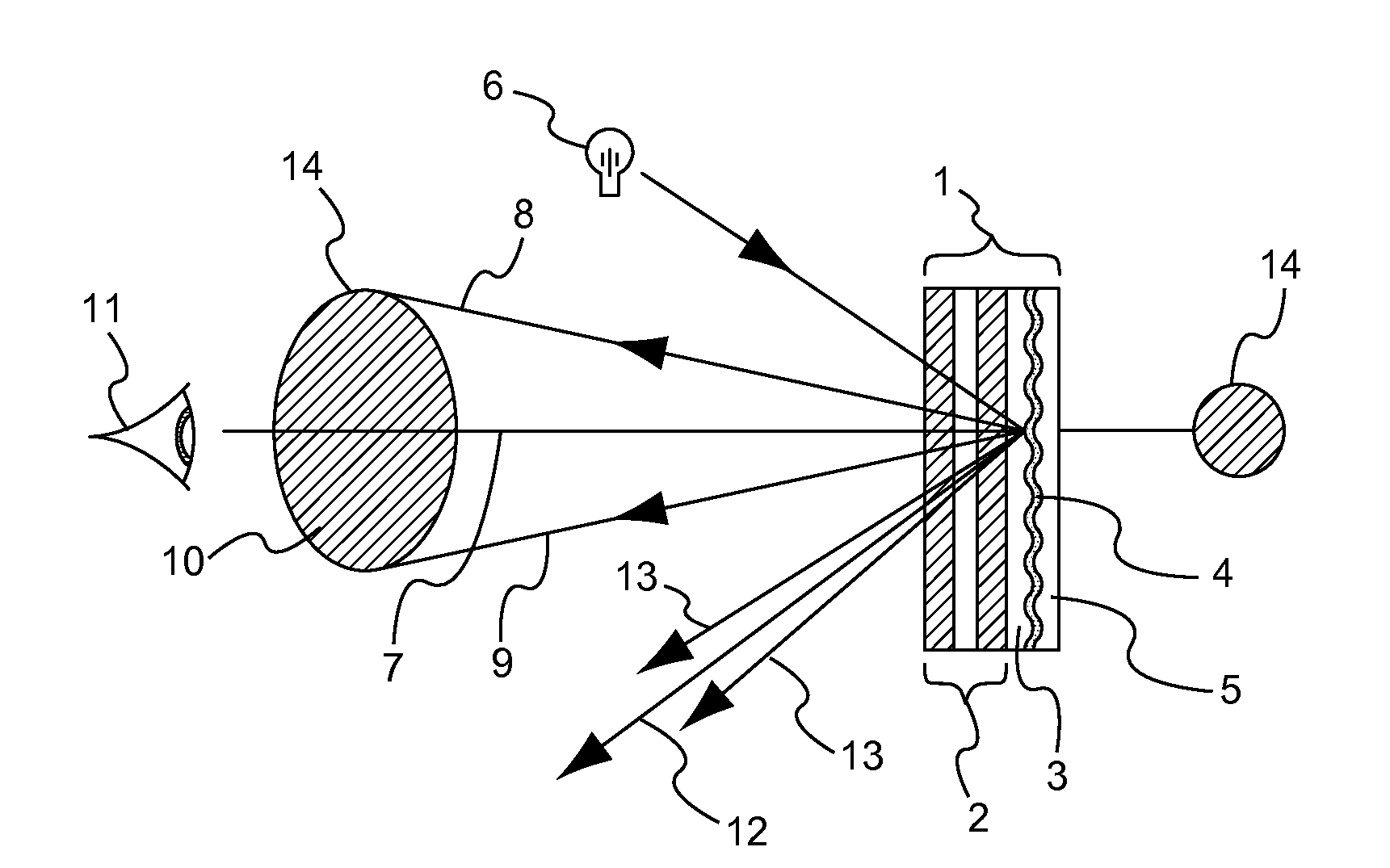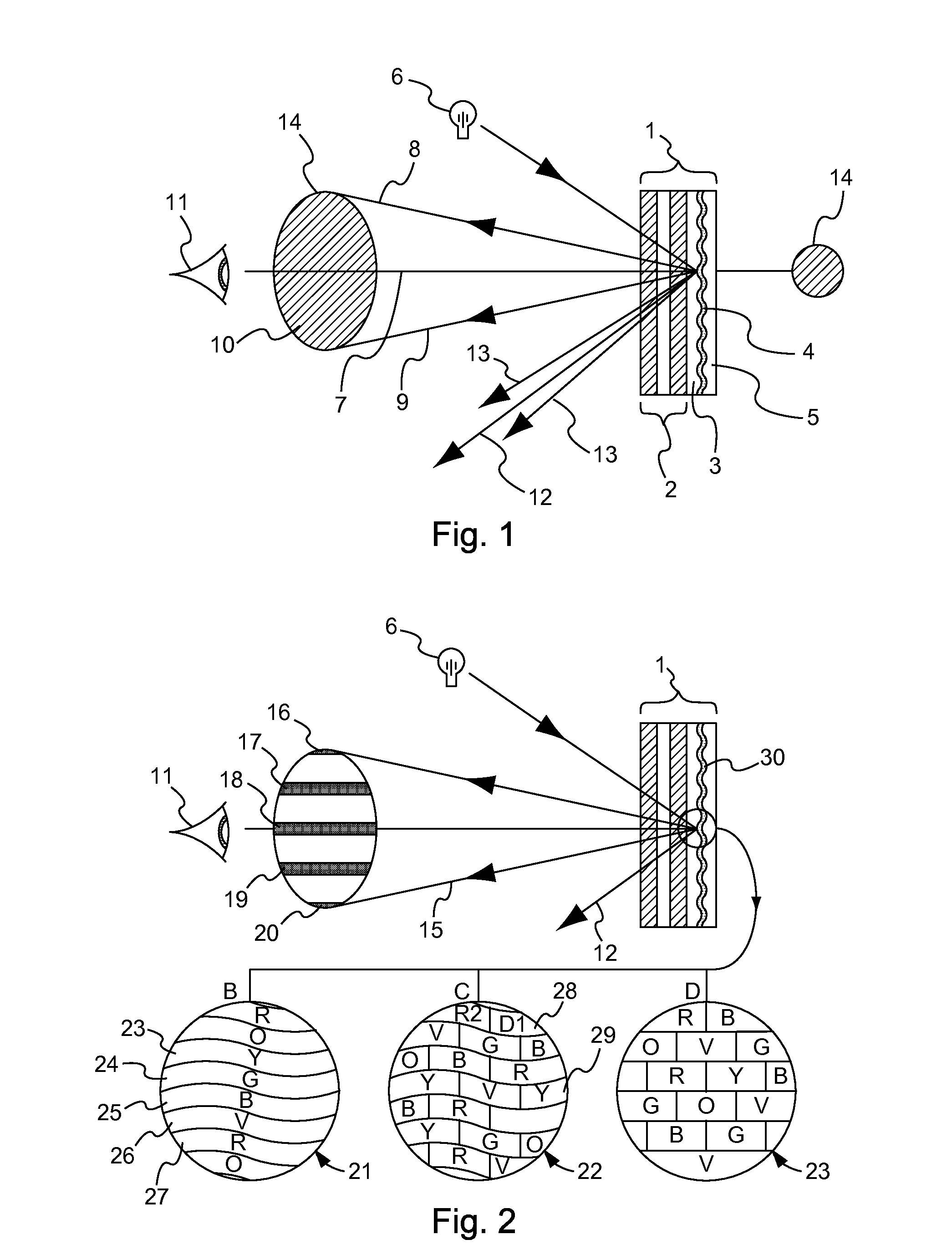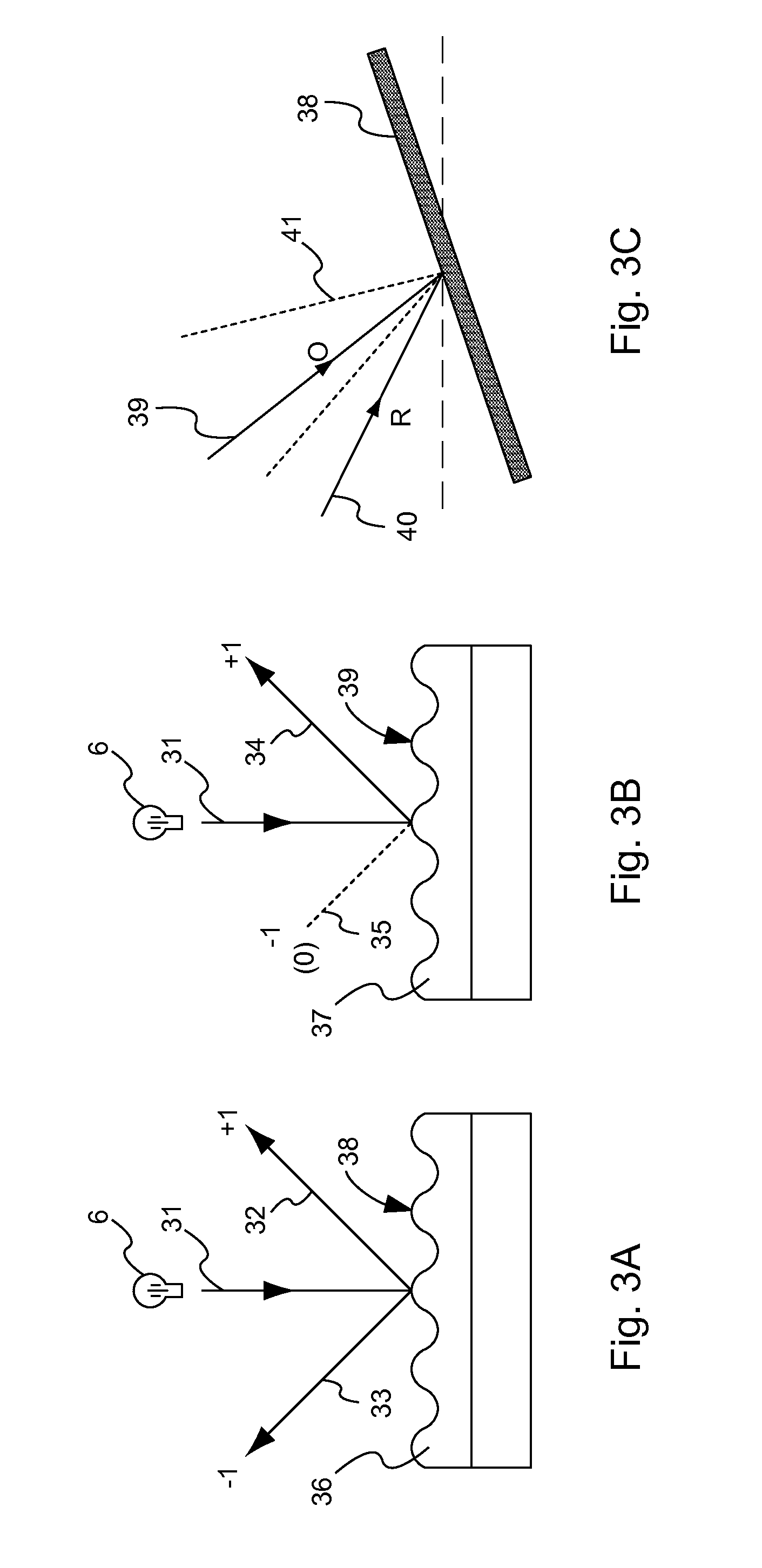Diffractive device
a display device and diffractive technology, applied in the field of refractive image display devices, can solve the problems of reducing efficiency, inherently low diffraction efficiency, and not recognizing or addressing
- Summary
- Abstract
- Description
- Claims
- Application Information
AI Technical Summary
Benefits of technology
Problems solved by technology
Method used
Image
Examples
Embodiment Construction
[0105]Sections 1 and 2: Here, new types of enhanced higher efficiency and otherwise improved holographic and diffractive devices for use typically as reflective holographic enhancement film are proposed, particularly for display applications, and characterised as achromatic diffractive device, made up of many non overlapping individual elements of a size beneath the normal eye resolution the sum of whose diffracted images creates the achromaticity of the device. Such devices can also have non classical diffractive replay (blazed), providing an enhanced reflectivity in the desired diffracted order. These new devices are holographically (Section 1) generated or directly written by electron beam lithography, (Section 2) for use as optical enhancement elements for image providing display elements such as liquid crystal displays to enhance the brightness and visibility of such displays when viewed in reflection ambient lighting conditions. Also disclosed is the creation of new features o...
PUM
 Login to View More
Login to View More Abstract
Description
Claims
Application Information
 Login to View More
Login to View More - R&D
- Intellectual Property
- Life Sciences
- Materials
- Tech Scout
- Unparalleled Data Quality
- Higher Quality Content
- 60% Fewer Hallucinations
Browse by: Latest US Patents, China's latest patents, Technical Efficacy Thesaurus, Application Domain, Technology Topic, Popular Technical Reports.
© 2025 PatSnap. All rights reserved.Legal|Privacy policy|Modern Slavery Act Transparency Statement|Sitemap|About US| Contact US: help@patsnap.com



